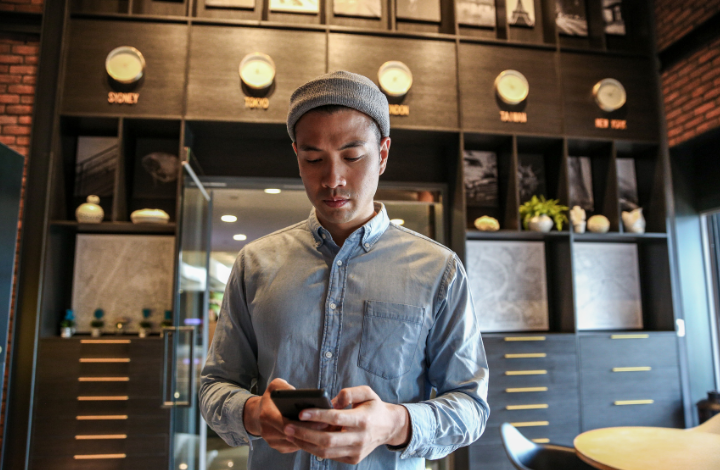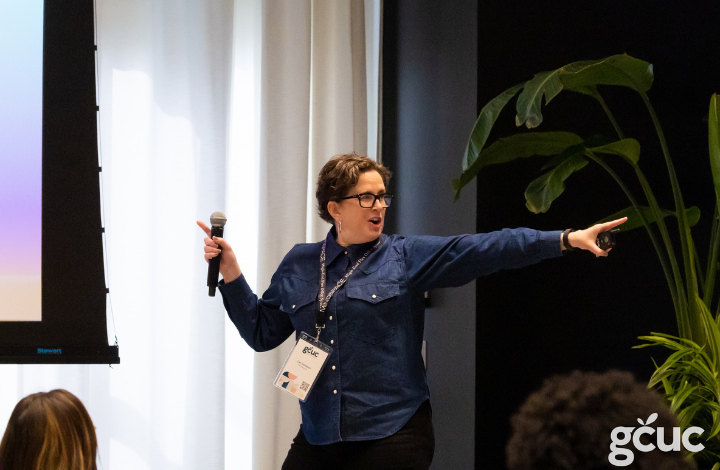It’s one thing to bring new members into your space. It’s another thing entirely to bring them into a thriving, welcoming community.
Holding space for a community to take root, grow and thrive is at the heart of your work as a space operator. But I want to dive into another vitally important aspect of community building: communication.
You need to be able to communicate with your members.
And they must be able to easily communicate with each other.
You need to be able to update them that there will be construction in the space next week or that native animal rescue is indeed coming to get the bird out of the rafters. And they need to be able to tell their fellow members that there’s a basket of peaches from their tree in the kitchen or that they’re looking for beta testers for their new app.
These simple, human acts, done thousands of times over a year, are the matrix that holds a community together.
If you don’t have a way for your members to communicate with each other, fix that immediately. If all communication in your space needs to go through you, your community will never be activated or reach its full potential.
The tool you use matters less than the fact that you have a communication tool in place.
But you do need tools. So here are eight coworking member communication tools to consider using in your workspace.
1. Slack
A popular messaging app, Slack is a great communication and community building tool. We use it in the Lab and I couldn’t be happier. If you’re new to Slack, it’s an easy way to communicate with members in topic channels, one on one, and in small groups. The customizable channels mean you can have ones for business, announcements, celebrations and whatever else you’d like. In the Lab, we have channels for email marketing, tools, social media, sustainability, events and more, as well as a bookclub channel, a humor channel, a watercooler channel, etc. Slack is what you make it.
2. Facebook Group
Regardless of how I feel about Facebook personally, much of the CJCo extended community is on the platform and the Coworking Content Alliance now has 1,700 members from around the world. A Facebook group falls into my “meet people where they are” category—and it may for you, as well. If much of your membership is already on Facebook, having a Facebook group may be a good choice for your community.
3. Internal Newsletter
If you’re not sending a regular newsletter to your extended community, put it at the top of your todo list. Email is a powerful way to build your brand community, generate leads and strengthen your brand. And, you’d be wise to have an internal newsletter that goes out to current members.
Regardless of what external communication platform you use, some people will choose not to engage with you there. They will, however, notice a regular email in their inbox. Use your internal email to round up important announcements, celebrate wins, share fun or enlightening conversations from the space and social channels, ask for feedback, list upcoming events etc. This way, it becomes the one-view source for all your information and conversations.
4. Whatsapp
Whatsapp is a Facebook-owned messaging tool that “allows users to send text messages and voice messages, make voice and video calls, and share images, documents, user locations, and other content.” I haven’t used Whatsapp for group communication aside from a handful of multi-person messages, but I know that some coworking space operators and communities use it for mass messaging and it seems to work well for them.
5. Discord
With the tagline, “Your place to talk and hang out,” Discord is an emerging player in the community communications sphere. A “VoIP, instant messaging and digital distribution platform designed for creating communities,” Discord enables users to “communicate with voice calls, video calls, text messaging, media and files in private chats or as part of communities called ‘servers.’” Discord may be overkill for your coworking community as it seems to shine as a tool for very large communities, but the buzz around this platform is real.
6. In-person Communication
I wasn’t expecting this to be on the list of communication tools, but several people have mentioned to me that in-person communication with members is the best way to spread the word about events and programming, share news and announcements, and celebrate wins.
Of course, frequent connection is what makes a coworking space thrive. A community manager who prioritizes connecting people and communicating fun, important and timely information is a community manager worth celebrating. But, heads-up, in-person news sharing should be used in addition to strategies and tools that reach everyone and are viewable by members who can revisit the details.
7. Google Group
Are we still using Google Groups? Is that a thing? When I joined my first real coworking community, NextSpace Santa Cruz, many years ago, communication was done via Google Group and our inboxes. I have to say, it did not suck. You could set email notification preferences if they got too much, but I found getting emails from my fellow, new-to-me members about everything from snacks and art shows to best practices around website UX and creating contracts to be a great way to connect and get to know people in the community.
8. Community Platforms
A quickly-growing collection of community and membership-driven platforms, including Mighty Networks, Circle and Community are popping up. The benefit of these platforms is that they are all-in-one power tools for communication, events, content and even courses.
Conceptually, I really like the idea and I’ve tested and researched a number of them. Here’s the rub, though: with these platforms, you’re asking people to leave what they’re doing and login to a separate platform. Most people won’t do this.
The reason Slack, Facebook, email and even Whatsapp work so well is because people are already using these tools. Trying to get people to engage on a brand new platform is challenging, to say the least. And if you’re moving an existing community to a new platform, be prepared for your engagement to plummet.
Over to You
What have I missed? What are you using in your space?
Let’s chat about it in Friday’s Coworking Convo. Our all-star guests, Anne Kirby from The Candy Factory, Renee Sánchez Leal from Society 204, Bruce Montgomery from The Entrepreneur Success Program, Joshua P. Jané from Percolator, and Sarah Athanas from Groundwork will kick off the conversation. Then we’ll open it up to everyone.
Elevate your indie coworking space and brand in The Lab.
Get the education, support and community you neeD





